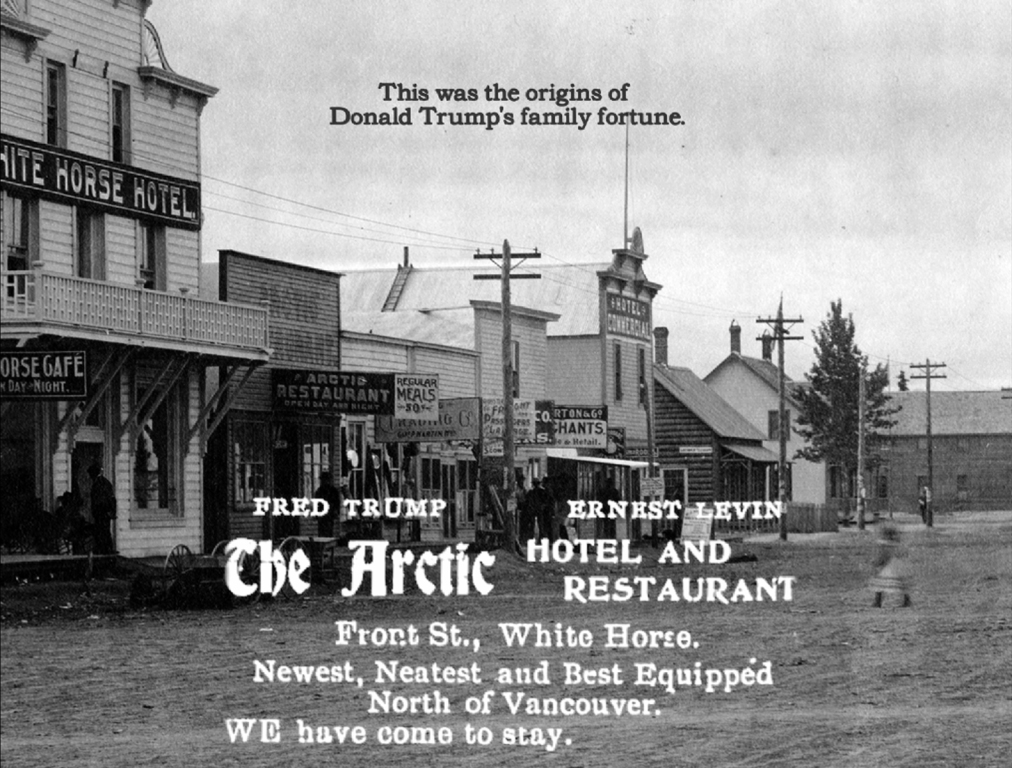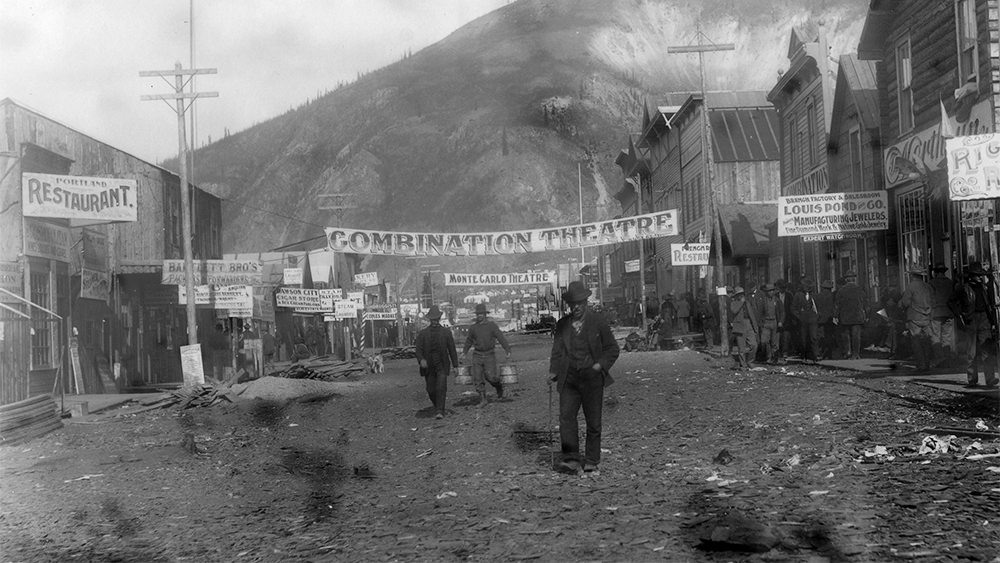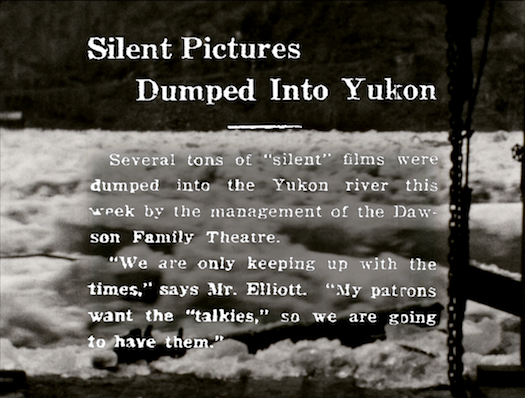Dawson City, Frozen Time



Here is a pivotal example of the importance of film restoration, of the search for apparently lost history, and of documentary filmmaking to bring history to the forefront of our modern attention.
In 1978, a construction digger uncovers, in a hole, in Canada’s Dawson City, over 500 reels of film. What was on those reels, and why were they buried? As word of the discovery spreads at the beginning of the 1980s, a letter arrives to Dawson City’s mayor, with an explanation. The letter, written by a now retired banker who was responsible for getting rid of those reels several decades prior, reveals a history not only of the town, but of North America.
It is incredible seeing a town born and grow through the lens of an early movie camera at the end of the 1890s, watching crowds of men migrate to some of the most northern parts of the U.S., attracted by the promise of gold in the rivers surrounding barren, untouched lands, from whence Dawson City was born, and at a time when the movie camera was a novelty seen and understood by few. More pertinently, you see a remote town grow that would eventually influence what we now see as our present.
Over the course of a few narrow years during which the town’s population grew, they soon realised that there was no gold. But the men needed to be entertained. Hence the sprouting up of bars where they could drink, brothels where they could meet women, and, above all, movie theatres where they could watch films. Those film reels, making their way from a newly born Los Angeles, would seldom be recalled by the studios in California, and hence Dawson City’s library collection quickly grew, along with its own visually recorded history.
Dirty, grainy photographs of a brothel opened by the financially struggling grandfather of a certain Donald Trump, the seed from which the Trump empire would grow, is just one example of the insights this film shares. It takes time, as you watch, to make sense of the narrative the film follows. But as you keep going, you realise how all the separate story lines eventually join together in a single thread as we get closer and closer to the present. The result is hugely insightful and jaw dropping. Out of this ditch full of films, that were meant to be forgotten, we discover hundreds of films directed by women, films that the L.A. studios never thought to preserve, comedies that made people laugh featuring star actors in roles no one knew of. Alongside this film showing us a history of the town through these films, we also get to see some of these almost-gone-and-forgotten films restored to as good a condition as is currently physically possible with today’s technology.
If you have any interest in social history, in film history, in film preservation, archive, or in documentary narrative, I urge you to seek this film out. Your sense of knowledge and your love for cinema will feel a lot more fulfilled for having done so.
